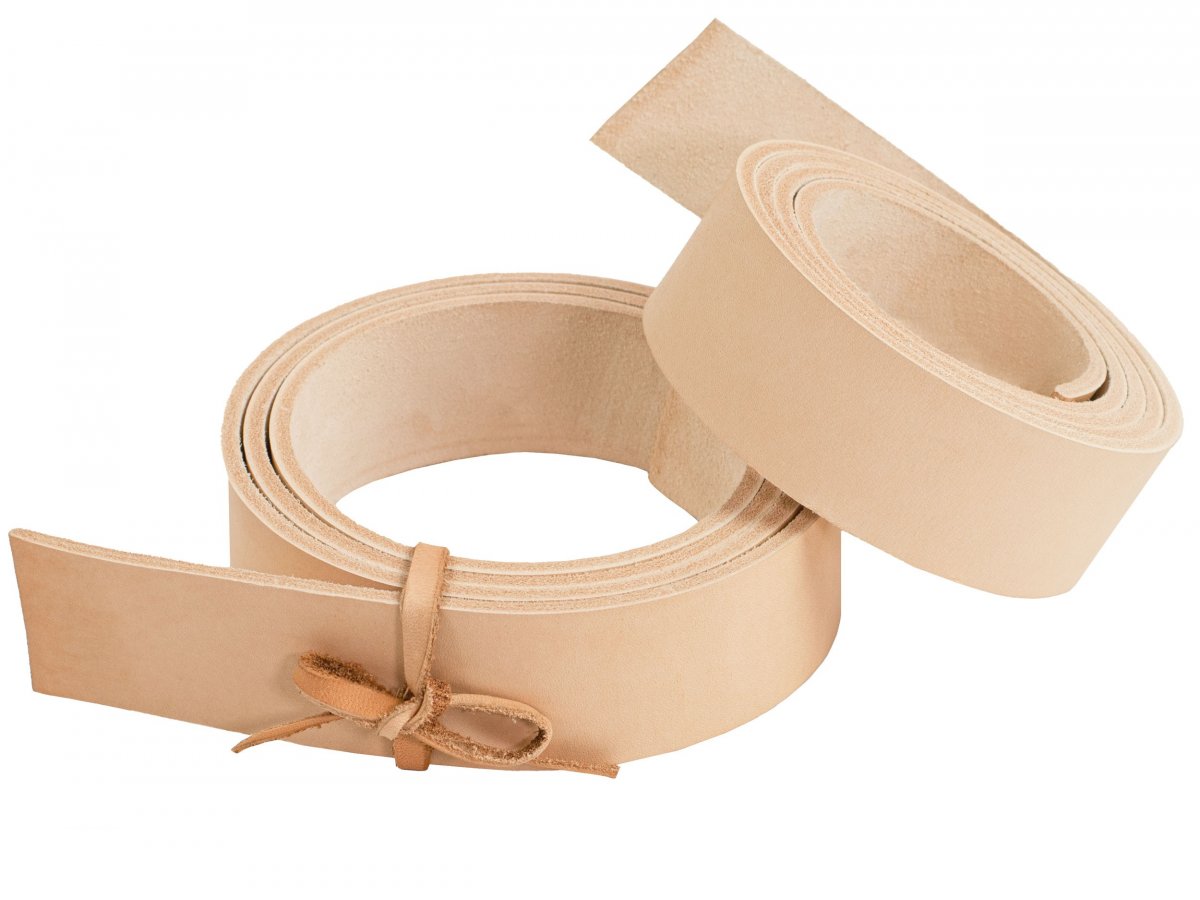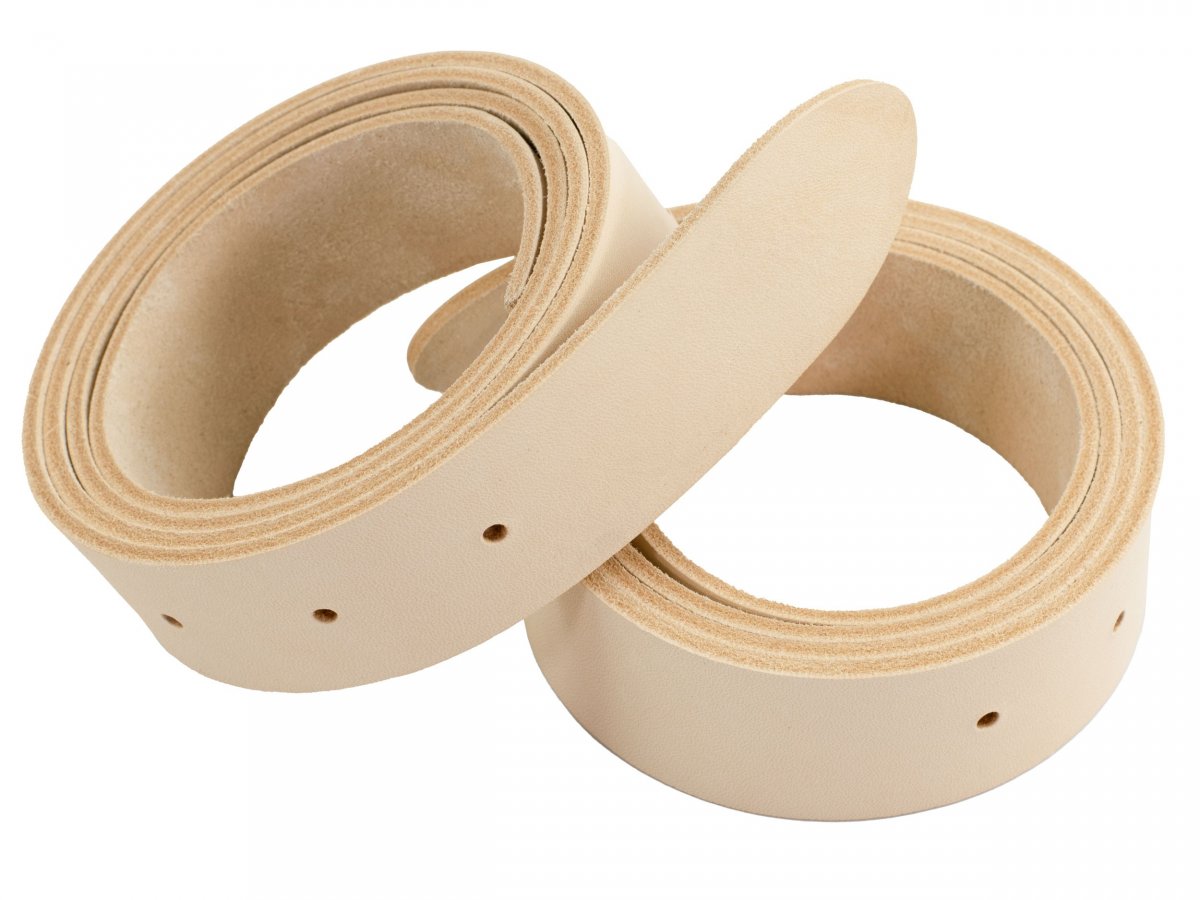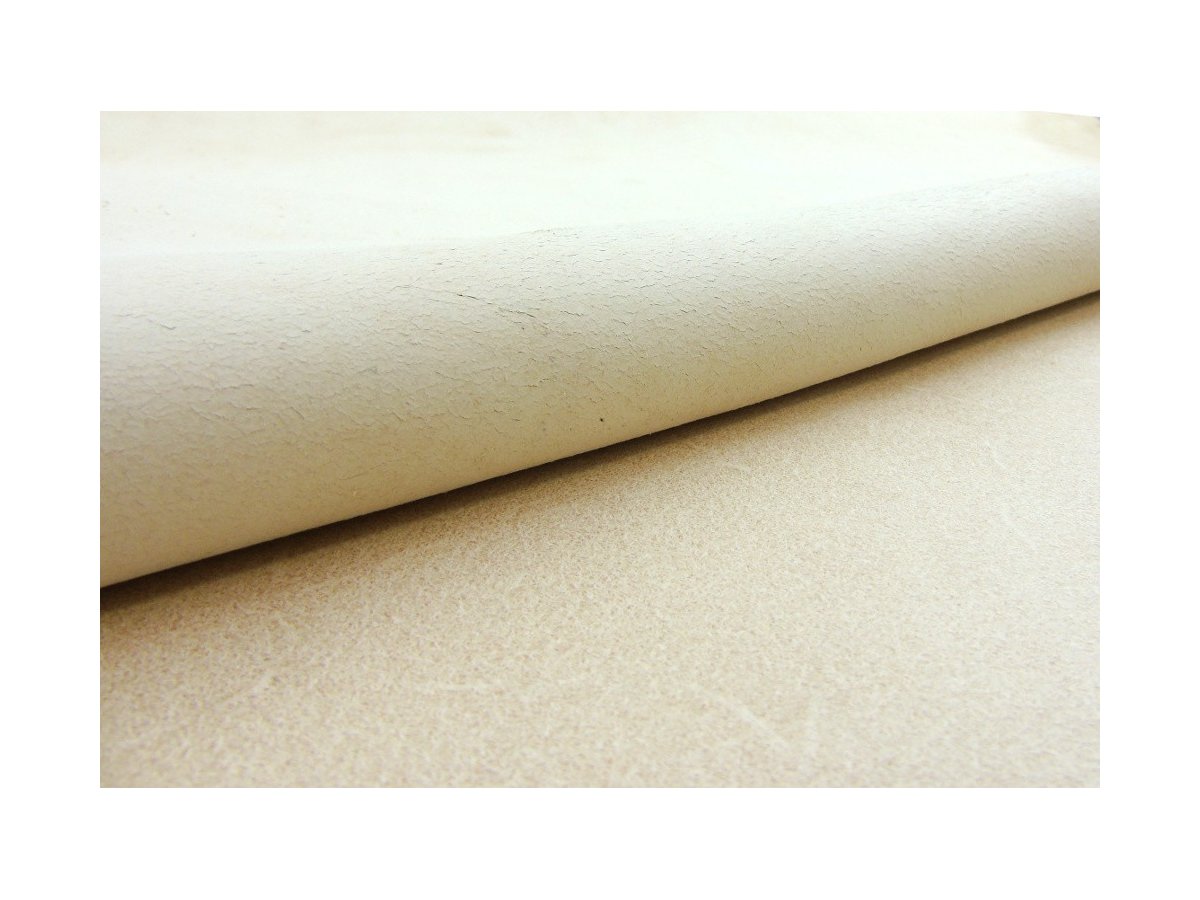Continuous Black 1 16 Thick 75 Wide Oil Tanned Leather Strap


- 130 cm (52") - 145 cm (57")
- 120 cm (47") - 130 cm (52")
- 1/2" (1,3 cm)
- 3/4" (1,9 cm)
- 1" (2,5 cm)
- 1-1/4" (3,2 cm)
- 1-1/2" (3,8 cm)
- 1-3/4" (4,4 cm)
- 2" (5,1 cm)
- 2-1/2" (6,4 cm)
- 3" (7,6 cm)
- 2,0 mm - (5 oz.)
- 4 mm - (10 oz.)
- Beige - Natural
- Navy Blue
- Tan - Chestnut
- Dark Brown
- Black


- Beige - Natural










- On sale!
- Out of stock




- On sale!
- Out of stock











- Good - 2° Grade
- Low - 3° Grade
- 1,2 mm - (3 oz.)
- 1,5 mm - (4 oz.)
- 2,0 mm - (5 oz.)
- 2,5 mm - (6 oz.)
- 3 mm - (7,5 oz.)
- 3,5 mm - (9 oz.)
- 0,7 m² - 7,7 ft² (Half piece)
- 1,4 m² - 15,5 ft² (Whole piece)
- Beige - Natural


















Vegetable Tanned Leather: What is?
Vegetable tanned leather is obtained from the processing of raw animal skins through the use of shredded plant rinds, rich of tannins, to which water is added and then the hides are left to soak. During the vegetable tanning process, the tanning substances are slowly fixed to the leather fibers in order to obtain a rot-proof material. This special processing makes vegetable leather versatile and suitable for customization and hand finishing. Vegetable tanning is the oldest and has prehistoric origins, unlike chrome tanning that is much more recent. Vegetable tanned leather belongs to the category of ecological leathers as it is characterized by the use of only natural substances, as tanning agents, for this reason it is not harmful to humans and the environment.
In our website Buyleatheronline you will find genuine vegetable tanned leather for sale, 100% made in Tuscany, in a wide range of colors, types, thicknesses and finishes. Vegetable tanned leather is a classic artisan production technique that mixes tradition and technological innovation; from this combination comes a naturally fine and totally ecological leather, perfect for bags, shoes, belts, saddles, furniture, wallets, tool holders and so on, which can be engraved, carved, dyed and colored according to the tastes and needs, even at home. Surfing through our online catalog you will have the opportunity to choose between the classic vegetable tanned leather such as the "Tuscan Vacchetta Leather" in crust, ready to be used as is or to be dyed by hand or a fully finished and colored vegetable tanned hide. All the accessories that you can create with the veg tan leather for sale can be easily customized thanks to the veg tanning process that doesn't limit the imagination of the craftsman, lending perfectly itself to the most varied dyeing techniques or engraving by hand or machine.

Tannins
Tannins are used to tan the leather, they are present in some plants such as mimosa, chestnut and quebracho. They are derived by shredding the bark of these plants in order to obtain a powder which, when mixed with water, allows the tanning, that is to say the stable and irreversibly fixation of the fibers of the dermis of the skins. Tannins are therefore tanning agents that are able to fix themselves stably to the animal skin fibers and prevent their decay and putrefaction.
How Vegetable Tanned leather is made (Step-By-Step)
The vegetable tanned leather production process consists of five main steps:
- Riviera works
- Pre-tanning
- Re-tanning and fattening
- Drying
- Finishing
The "riviera" works represent the preliminary phase and have the purpose of preparing the still raw leather for the following stages of production. It includes the following steps: soaking, hair removal, liming, deliming, fleshing and pickling.
Once the riviera phase is over, the leather is not yet tanned, but it already has a certain degree of stability that allows it to be preserved for a certain period of time. Later, the pre-tanning phase begins, from which an intermediate product called "wet-white" is obtained. Then there is the tanning stage in which the leather is tanned with water, mostly in large barrels, called drums, which by rotating facilitate the penetration of tanning agents, fatteners and any dyes.
Once tanned, the leather is obviously still damp and with the drying process it begins the fourth phase, that consist of drying the skins in the air or inside ovens; subsequently then the last phase takes place, that of finishing where the leather hides pass through various stages of finishing according to the requirements to be obtained. In reality, once dried, vegetable tanned leather needs very few refining processes, simple mechanical operations are enough to soften and stretch it, and then it can be immediately used for the production of finished products. If it is not even colored, it keeps the original colors of the bark of the plants used: it goes from a light beige color using the various types of mimosa, to a more reddish-brown beige with the use of quebracho, up to a more intense brown with the use of chestnut bark. Often a "cocktail" of the various tannins is made to obtain the desired result.
Advantages and disadvantages of veg tan leather (Benefit)
The advantages of vegetable tanned leather derive above all from the fact that it has characteristics of greater vitality and reactivity than a chrome tanned leather. Vegetable tanned leather is defined as "more alive" and less stable than mineral tanned leather. It needs more care and precautions during production, but it has a natural appearance especially when associated with various greases and oils that make it very reactive and can be polished simply by rubbing it. On the other hand, it is less resistant to water penetration and humidity to the point that mold can form if not treated; it can also change color more easily when in its natural unfinished state if exposed to the sun. Further limitations derive from the low heat resistance, especially with modern shoe manufacturing techniques that include soles in synthetic materials at high temperatures. Vegetable tanned leather, in fact, will never be used for the production of sneakers, because it tends to deteriorate irreparably at temperatures above 70/80°C. Moreover, vegetable tanned leather has a lot of usage limits for modern production of decor objects, such as sofas and upholstery in general. On the other hand, it is perfect for creating designer chairs and luxury desks. Finally, there are also limits to be considered for use in clothing industry: vegetable leather has no particular anti-tear qualities and breaks more easily, especially if at very low thicknesses required by the clothing market for elegant and very fine garments.
Common uses of Veg Tan Leather
Vegetable tanned leather is a very versatile material and is mainly used in the field of leather goods such as for the production of belts, bags, saddlery, wallets and footwear. Vegetable leather can be used to various types of customization, from carvings to coloring by hand or by immersion, offering to the craftsman who works it infinite possibilities of use.
How to care for Veg Tan Leather
The care and maintenance of vegetable leather are usually very simple, you can use oils such as straw oil or ox foot oil, mixed with 30% of mineral oils, which penetrate into the vegetable leather give an even more beautiful and rich appearance. Alternatively, normal shoes creams and many other vegetable oils can be applied to maintain the beauty of these leathers over time.
Appearance of veg tan and changes in time
A natural vegetable leather is subject to change color towards reddish or a more intense brown, especially when subjected to light. However, this does not represent a limit, on the contrary, it is often considered an added value and in any case is less evident in drum-dyed or fully finished vegetable leather. On the other hand, if the vegetable leather is oiled, such as the traditional "tallow" (sego) tanning with ox fat (also called vacchetta), it tends to improve over time becoming more and more beautiful.

Vegan Leather Vs. Veg tan leather
Vegan leather is a big misunderstanding because the word "vegan" is commonly referred to as artificial leather or imitation leather. All the processes that lead to these finished products, which are increasingly refined and beautiful, involve extremely polluting processes and the use of raw materials derived from petroleum. If we want to be more exact, a natural vegetable tanned leather is the most ecological product there is. Obviously, skins and coats of animal origin are used to produce leather, which is important remember that are not killed to obtain the skins, that is a completely secondary product compared to meat: the leather does not require the sacrifice of animals and their killing, it is a recovery of a secondary source of them that would otherwise be thrown away.
Vegetable Tanned Vs. Chrome Tanned Leather
The main difference between vegetable tanning and chrome tanning consists in the use of two different types of tanning substances: the first one uses extracts of vegetable origin present in some plants called "tannins", while the second uses metal salts such as the "chrome". The tanning of the hides consists in making them non-perishable and in stably combining substances with the fibers of the dermis, in the chromium one compared to the vegetable one the process is faster, more easily polluting and more industrializable. In addition, unlike vegetable tanning, chromium makes it possible to obtain a product that has greater resistance to moisture, better flexibility, lower costs and a longer life of the leather. On the other hand, this process has a greater environmental impact due to the substances used and polluting residues.
How to recognize Veg from Chrome tanned leather
To recognize a vegetable tanned leather from a chrome leather you must evaluate the sensation to the touch which is unmistakable for full vegetable leather, more mellow and fuller. A leather expert recognizes the difference in visual appearance with a simple glance. The difference is also evident in the case of the so-called "mixed tanning" (latigo), that is a cocktail between the two types of tanning, which in practice is obtained starting from a mineral pre-tanning (chrome) and proceeding with a vegetable re-tanning, or the opposite. There are also cases in which the percentage of chromium is so low (2/3% of chromium salts) thus a more careful examination is necessary. A simple way for experts to better understand the difference between the two types of tanning and to ascertain if there is even a minimal presence of chromium, is the following: take a very thin strip of leather, similar to a match and burn it with a lighter. The resulting powder is crushed with a finger on a white paper and if the color appears blue or dark green we will be in the presence of a percentage of chromium, on the contrary it will be a vegetable tanning.
FAQ
IS VEGETABLE TANNED LEATHER REAL LEATHER?
Yes, it is the best real leather, very natural and beautiful. It is also made with a sustainable tanning process without chromium salts, but only with plant extracts.
HOW MUCH IS VEGETABLE TANNED LEATHER AND WHY IS ITALIAN LEATHER SO EXPENSIVE?
The price of vegetable tanned leather varies according to the amount of tannins used in the tanning process. The best vegetable tanning, like the Italian ones, use almost 30% of natural extracts, for this reason the leathers are much more expensive than any other mineral product. In fact, in general we must consider that the cost of plant extracts is at least three times greater than the cost of mineral salts. Furthermore, the vegetable tanning process is very complicated and requires a lot of attention at every stage of production. Finally, vegetable tanning cannot be standardized or industrialized, on the contrary, it will always remain an artisanal process unlike chrome tanning.
IS VEGETABLE TANNED LEATHER WATERPROOF?
Vegetable leather is not water repellent, on the contrary, without any additional product applied, it absorbs water more than leather tanned with mineral salts. Furthermore, if immersed in water, it can subsequently be put into "shape" and once dried it will return to assume all its original properties, because the fibers of the dermis, associated with vegetable tanning extracts, are unalterable.
IS TANNED LEATHER TOXIC?
No, no tanned leather is toxic. Vegetable leather in particular is never toxic, because it is composed and treated with only natural substances.
WHAT IS THE BEST LEATHER IN THE WORLD?
The best leather in the world is considered the oiled vacchetta , that is completely vegetable tanned with animal oils and fats, also called "greased with dry tallow" because the production process is divided in two phases: the first phase is tanning and after drying, the leather is put on a second time in the drum, waiting for the best penetration of the "tallow", mostly obtained from the remains of fat from cows or bulls.
WHICH LEATHER IS BEST FOR BELTS?
The best leather to make belts is vegetable tanned leather with a minimum thickness of 3mm (8oz.), especially if you need a full thickness leather and do not want to apply more complicated processes, such as the lining or other components. We also recommend the use of shoulders or butts which, in addition to having the appropriate thickness, also have a square shape that allows you to optimize the cut and avoid waste.
HOW CAN YOU TELL IF LEATHER IS GOOD QUALITY?
To judge the quality of a leather, the following aspects must be taken into consideration: presence of defects, tanning and finishing. Unfortunately, leather is a living material, for this reason it can often have imperfections such as scratches or any other defect deriving from diseases, climate and farming conditions. The second aspect to take into consideration is then the quality of the tanning which can change according to the different techniques used, the know-how of the manufacturer, the equipment and the quality of the chemicals used. Finally, the surface of the leather can be improved with finishing, which can cover many defects, but if too heavy, it can decrease the quality of the leather and undermine its natural appearance.
DOES LEATHER HAVE FORMALDEHYDE?
Vegetable tanned leather in Tuscany does not contain formaldehyde, which is replaced by fats and oils. On the contrary, it is used in some of the industrial leather processes, mainly automotive upholstery and in home furnishings, to make the leathers softer. It is also used in the so-called "chrome free" products.
IS TANNED LEATHER BIODEGRADABLE?
Only vegetable tanned leather is completely biodegradable, while chrome tanned leather is not biodegradable, it can only be used for fertilizers (through further refining processes), otherwise it is destined for unsorted waste.
Source: https://buyleatheronline.com/en/19-vegetable-tanned-leather
0 Response to "Continuous Black 1 16 Thick 75 Wide Oil Tanned Leather Strap"
Post a Comment